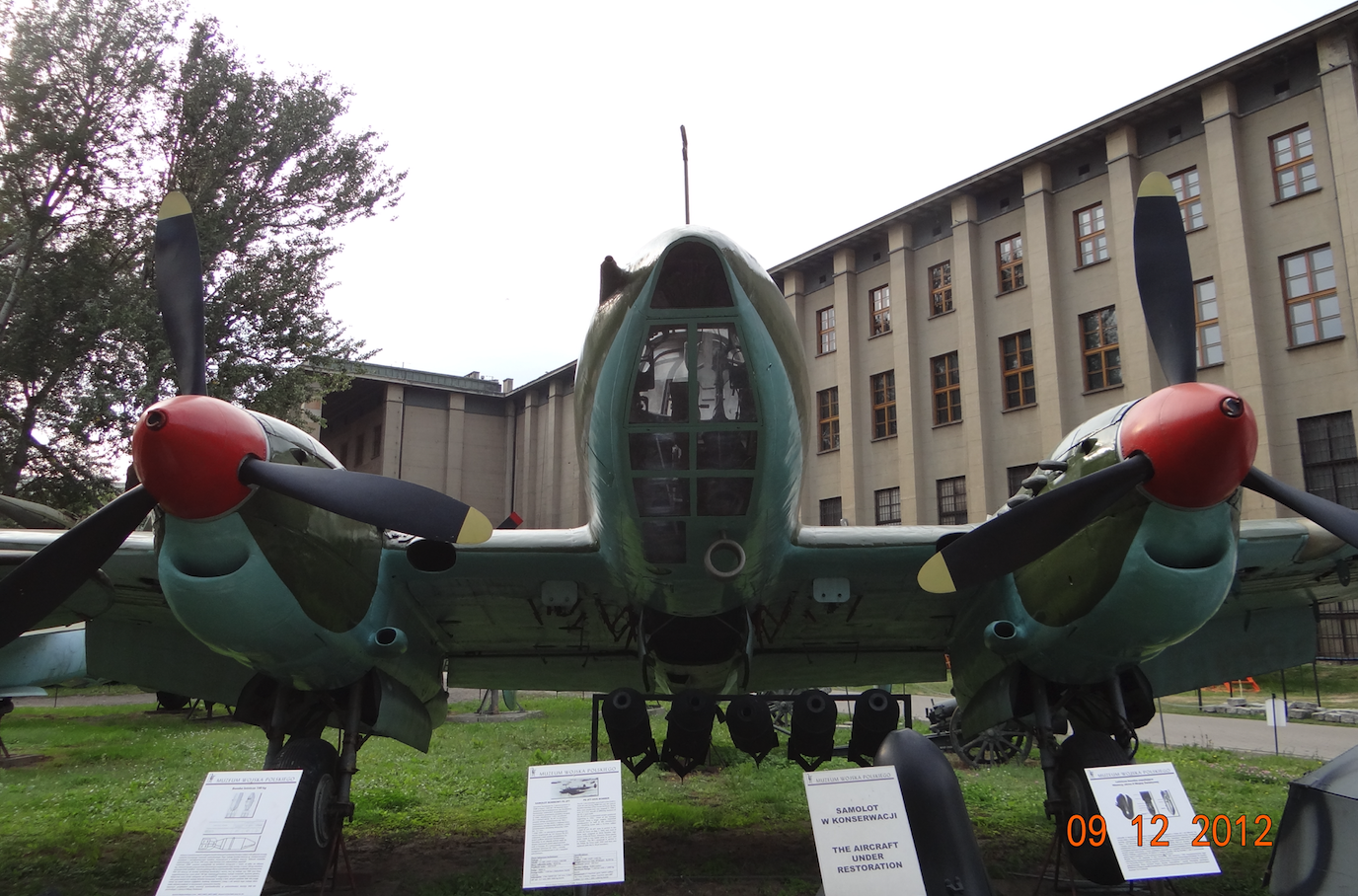Poznań 2008-05-05
The disaster of the Pe-2 FT on 14353. June 10, 1952.

On June 10, 1952, in the center of Poznań, the largest Polish military plane crash involving soldiers and civilians took place. The Pe-2 FT bomb machine No. 14353 crashed to the ground. To this day, not all aspects of this tragedy are known. The case was investigated by the Institute of National Remembrance and the Commission for the Prosecution of Crimes against the Polish Nation, the more so as it was classified for 56 years.
The Pe-2 FT aircraft were in service with the 21st Regiment of Reconnaissance Aviation and the only bomber unit in Poland at that time, the 7th Independent Air Regiment of Diving Bombers. Both regiments were then stationed at the Ławica Poznań Airport. It was a time of impending major changes. It was intended to form two more bomber regiments and arm them with Ił-28 turbojet bombers. The Pe-2 FT planes were mass-produced during World War II. They were not the easiest to pilot, much worn-out and not very liked by the crews. The mechanics put a lot of heart and work into these machines, but the failure rate was still significant.
On June 10, 1952, the aircraft crew from the 21st PLZ in the composition; the commander of the ensign of the pilot Zdzisław Lara, the navigator of the ensign Stanisław Kuć, the gunner-radio operator, sergeant Józef Bednarek; performed a training flight for reconnaissance. Around 08:30, when the plane was flying from the Starołeka district, the crew reported a failure of the right engine. The pilot directed the plane towards Ławica. A moment later the left engine also refused to obey. The crew made a decision about forced landing. Presumably in Łęgi Dębińskie on the Warta River. But the pilot had to see, according to a witness, a group of children playing football. He flew on, presumably trying to land in an undeveloped area near the Church of Corpus Christi, but did not make it. The plane hit the roof of the Workers' Work Cooperative at the intersection and hit the slope of the bridgehead of the Queen Jadwiga Bridge, which was then built. The force of the impact threw it upwards, after which the plane hit a pole of tram traction and crashed into the street. As a result of the fall, fuel and ammunition exploded, the fire engulfed trees and damaged nearby houses. According to one of the witnesses, just before the fall, the plane started firing its weapons into the air to warn people on the ground, thanks to which some of the workers working at the intersection managed to hide; however, this account is not confirmed by other witnesses. The catastrophe happened in the center of Poznań, at the intersection of Droga Dębińska, Królowej Jadwigi (then Marchlewskiego) and Garbary streets; its exact location, however, is given differently in the few sources concerning the accident. According to the Publication of Remembrance of Military Aviators 1945–2003 from 2003, the plane fell on the southern side of this intersection, in the place where the building of the Academy of Physical Education is now located; however, according to the testimony of witnesses quoted in the book Strictly Secret by Krzysztof M. Kaźmierczak, the accident took place on the other (northern) side of this intersection, near the Corpus Christi Church, at the intersection of Strzelecka and Krakowska Streets (currently there is an apartment block there). But this is perhaps a secondary issue.
Nine people died in the crash and 10-12 were injured. Honor their memory!
The causes of the tragedy.
After the accident, a commission from the Air Force Command was established to explain its causes. The chairman of the 5-person commission was General Ivan Turkiel, a Soviet who in 1950–1956 he was also the commander of the air force in Poland. Apart from him, the commission consisted of three Soviet and one Polish officers. The examination of the circumstances of the crash lasted only three days - the commission ceased its activity on June 13, 1952. The ruling admitted that there was a technical fault (a failure of the right engine due to unsealing of the cylinder liners), but the blame for the catastrophe was blamed on the pilot who was to panic and incorrectly approach an emergency landing.
According to the publishing house of Military Aviators 1945–2003, the probable cause of the accident was that the pilot made a turn that was too low.
According to the journalist investigating the crash, Krzysztof M. Kaźmierczak, the actual cause of the crash was not the pilot's error, but the poor technical condition of the bomber. K. Kaźmierczak emphasizes that according to witnesses, both engines (not only the right one) did not work (the plane flew silently). as a result of an engine failure, there was another accident involving the Pe-2 FT from Poznań, which also killed the entire crew, finally it points to the order No. 0157 of the Air Force Command, issued on June 14, 1952, four days after the accident and one day after completion of works a commission investigating its causes, in which General Turkiel ordered the engines of all Pe-2 FT aircraft to be checked for airtightness of the upper cylinder liner seal. As a result of the inspection, six engines were disassembled, four were repaired without taking them off the machines, and seven engine blocks were replaced. In the opinion of K. Kaźmierczak, this indicates a recurring technical defect.
Written by Karol Placha Hetman
